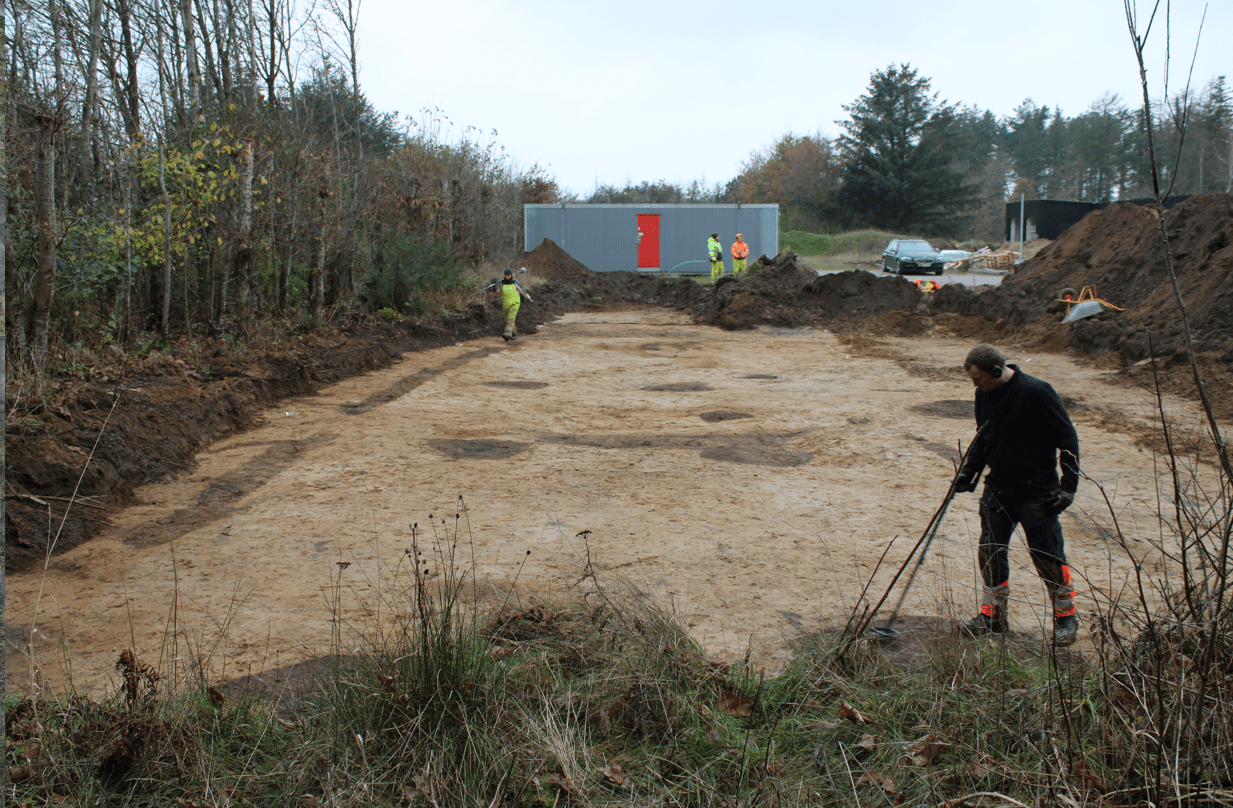Archeologists have found traces of a Viking hall in Denmark that once stood at the time of Harald “Bluetooth” Gormsson, the ancient king of Denmark whose moniker inspired the name of the technology that wirelessly connects your smartphone to speakers.
The hall was recently uncovered by archeologists near the village of Hune in North Jutland, Denmark, according to an announcement from the Historical Museum of Northern Jutland. Based on imprints left behind from the structure, they estimated the building once measured approximately 40 meters (131 feet) long and 8 to 10 meters (26 to 32 feet) wide.
“This is the largest Viking Age find of this nature in more than ten years, and we have not seen anything like it before here in North Jutland, even though it has only been partially excavated,” Thomas Rune Knudsen, excavation leader and archaeologist at the North Jutland Museums, said.
“We only had the opportunity to excavate part of the hall, but there are probably several houses hidden under the mulch to the east. A hall building of this nature rarely stands alone.”
Another shot of the recent excavations near Hune, Denmark. Image courtesy of Nordjyske Museer
It’s known that people in the Norse lands lived in longhouses (langhús) throughout the Viking era, just as they have in many cultures across time and space. However, they believe this particular building was more likely to be a prestigious building that served as a place for political meetings and ceremonies. It perhaps also had another everyday communal use when it wasn’t being used for rowdy Viking gatherings.
Its shape and design appear to bear close similarities with structures from the late Viking Age, ranging from the first half of the ninth century CE to the end of the 11th century. To get a better grip on its age, the team will continue excavations throughout 2023 and analyze the site with radiocarbon dating.
Another clue about the hall’s age comes from a fascinating rune that was previously discovered in the nearby area. Dated from 970 to 1020 CE, it reads: “Hove, Thorkild, Thorbjørn set their father Runulv den Rådnilde’s stone”. Along with providing a tighter time frame, the rune indicates the structure was perhaps linked to a local leader known as Runulv den Rådsnilde.
The rune reads: “Hove, Thorkild, Thorbjørn set their father Runulv den Rådnilde’s stone”. Image courtesy of Nordjyske Museer
“It is difficult to prove that the found Viking hall belonged to the family of Runulv den Rådsnilde, but it is certainly a possibility. If nothing else, the rune stone and hall represent the same social class and both belong to society’s elite,” explained Knudsen.
If all this is on the money, it would show that the hall was being used during the time of Harald “Bluetooth” Gormsson, king of Denmark from 958 to 986 CE. His name reportedly comes from his having a “dead” tooth which was a grey/blue color, and his reign was especially notable as he was the first ruler to support the spread of Christianity across Denmark.
As for ol’ Bluetooth’s connection with the prolific wireless technology we use today, it’s said to be a reference to the king’s relationship with Norway. Just as Bluetooth technology allows cross-communication between devices of all kinds, this king united Denmark and Norway in 958 CE.
Source Link: How A Vast Viking Hall Discovered In Denmark Is Linked To Bluetooth Technology
